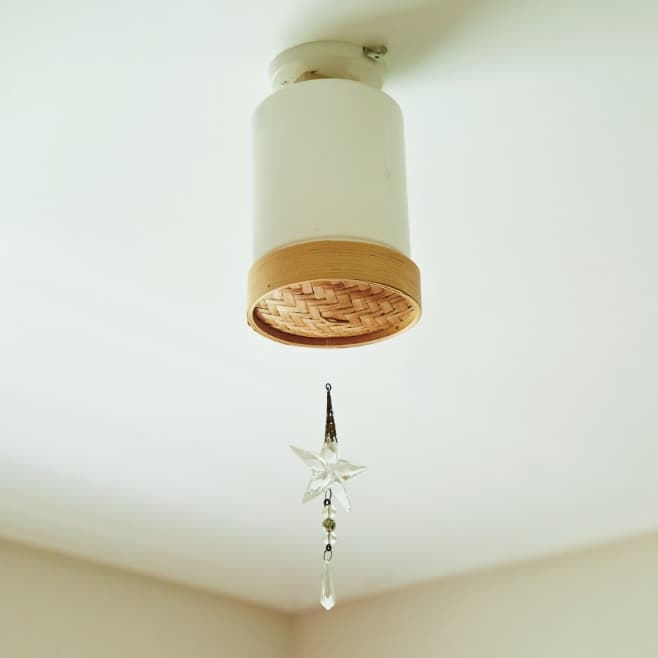
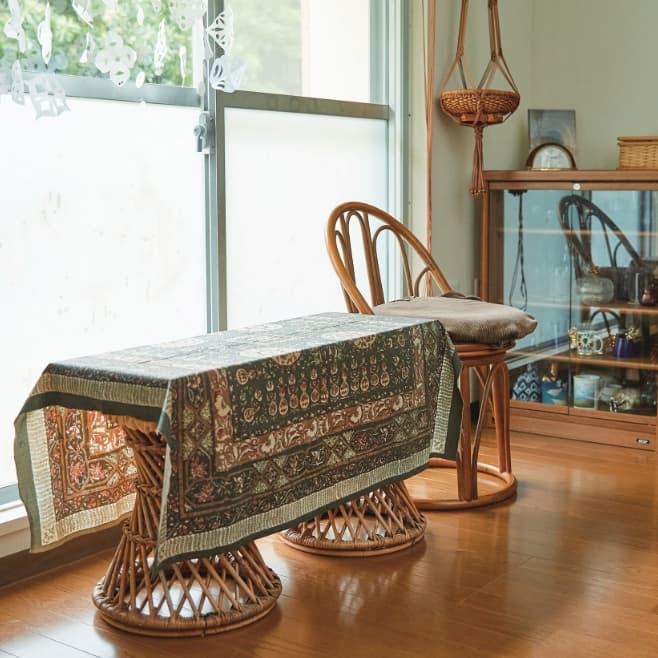
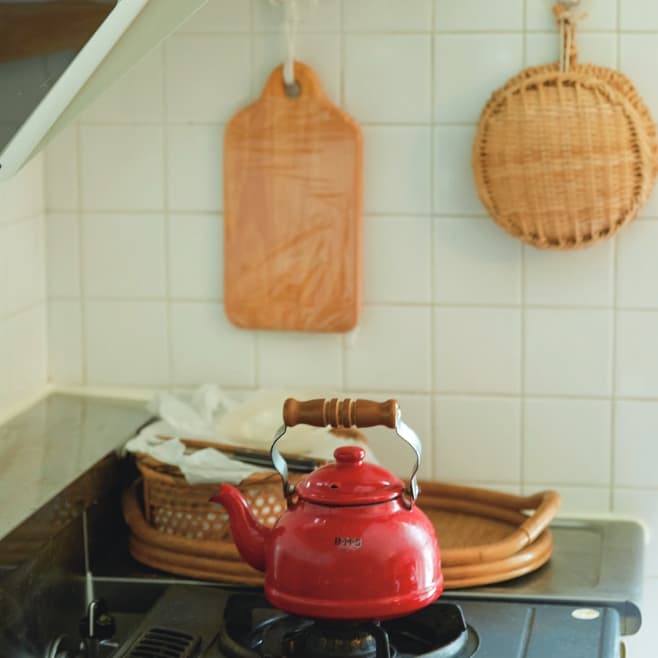
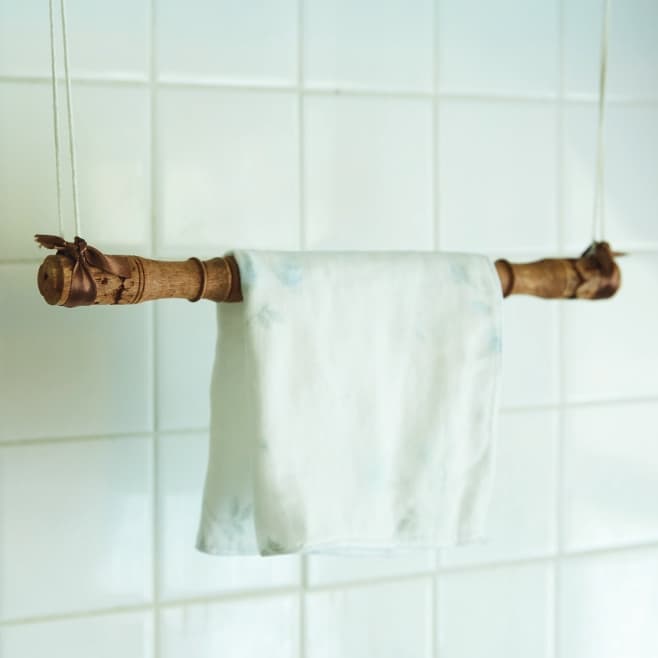
Yoko Ogasawara worked in a Kyoto gallery dealing with Japanese art and contemporary ceramics.
She later moved to Tokyo and worked as a curator at the Yayoi Museum & Takehisa Yumeji Museum and as an adjunct lecturer at Seikei University.
Since retiring, she stayed active as a freelance curator and as an art essayist who contributes to newspapers and magazines.
A conversation she had with Tadanori Yokoo appeared in the September issue (vol. 191) of The Funai (Funai Honsha) (on sale around August 3).
I first encountered Christianity as a young elementary school student and have been interested in various religions ever since. Since high school, I have been committed to Buddhism, and I have idealized a medieval recluse’s view of life, a life in a bare thatched hut. I even copied drawings of the hut in which Kamo no Chomei lived in the Hojoki (An Account of a Ten-Foot-Square Hut). I have longed to live a life of spiritual richness in a simple living space like that. After entering the Department of Japanese Literature in the Faculty of Literature at Toyo University, I wanted to write about the discussion on entering the priesthood appearing in Essays in Idleness (Tsurezuregusa) and spent my four years in the university grappling with this topic. I have also liked to economize since I was a small child and gradually started thinking that I wanted to live with less.
This longing stayed unchanged as I worked at galleries in Kyoto and art museums in Tokyo. I decided that I would keep my living expenses at 1,000 yen a day and that I would go shopping with the intention of not buying unnecessary things. But I also set aside money to invest in myself, and while in Kyoto, I did things like visit teahouses by myself. While working at a museum in Tokyo, I studied at Toyo University as an auditing student and obtained a curator’s certificate.
I also like adventure, and after being strongly attracted to a German Romantic painter named C. D. Friedrich at the age of 49, I went to Germany nine times to trace his footprints and visit the settings of his paintings. I went deep into mountain forests and climbed down cliffs to the sea. Friedrich also lived a simple life. The result of my explorations was a book I wrote called Furidorihi e no Tabi (a journey to Friedrich) (Kadokawa Gakugei Shuppan).
Even now, it’s my basic rule to spend just 1,000 yen a day. I also wear clothes I had when I was around 20 years old, applying some ingenuity. I don’t use much seasoning in my cooking and enjoy the taste of the ingredients as they are. I save time and utility costs by only baking and boiling. I can get by with just a minimum number of pots and cooking utensils if I’m not doing anything complicated.
Although I previously moved around a lot, I have lived in the same three-bedroom place in an apartment complex for the past 18 years. It’s in a nice environment with plenty of greenery, though it’s a bit far from the train station. Whenever I go to a museum or art gallery in central Tokyo, I walk the 30 minutes it takes to get to the station instead of taking the bus. It’s good exercise and saves money.
I almost never buy furniture. I turned a large chest of drawers with only drawers in a chest. I did this when I moved and couldn’t carry the upper section inside and had to discard it. I took some rattan stools with their seats missing and turned them into a dining table by passing a board over them. And I made a sofa by lining floor cushions on a wooden stand and covering them with an unstitched Indian skirt I no longer wear.
Let’s not think of not having things as miserable and instead turn it into something refreshing. I have lived with my mind made up to think This is how I am, never comparing myself to others. This is my “thatched hut.” And it’s why every day is a joy. At a time when we face a global environmental crisis, I believe we can learn a great deal from the spirituality of ancient and medieval peoples who lived the best they could with a bare minimum of resources.




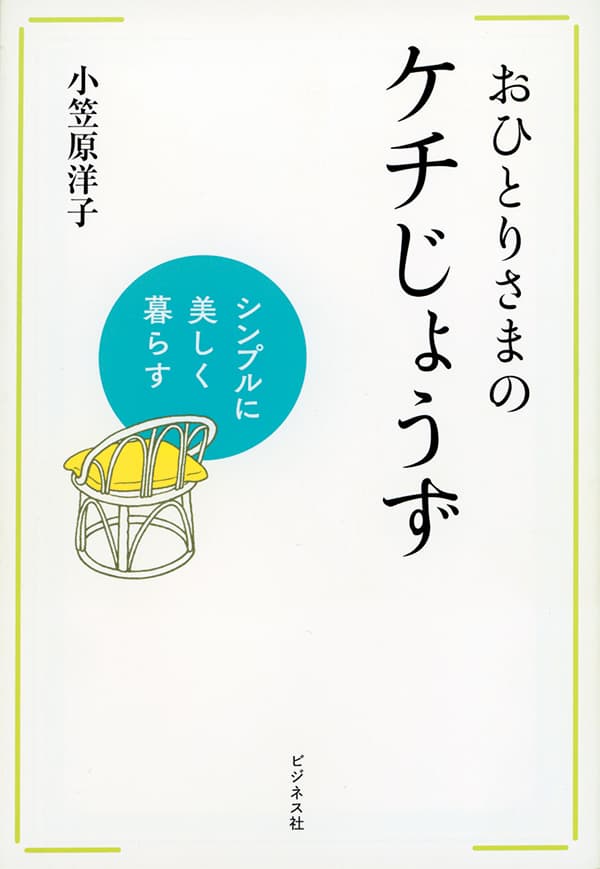
In this book, written when she passed her 70th birthday, Ms. Ogasawara describes how to live a life of health and contentment without spending money wastefully.
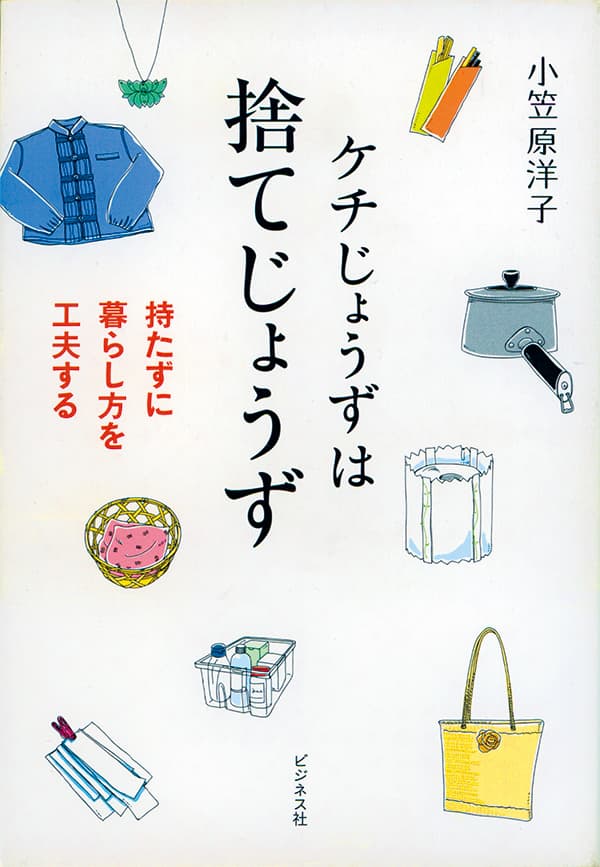
In this continuation of O-hitori-sama no Kechijozu, Ms. Ogasawara reveals the secrets of living without buying things by examining her life thus far and the wisdom she has accumulated over the years.